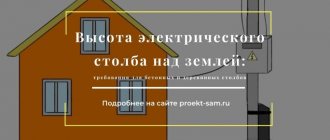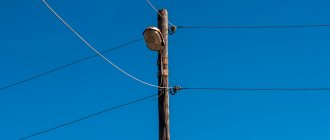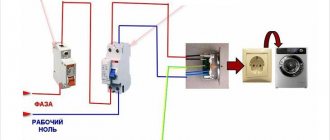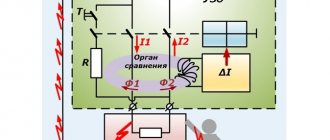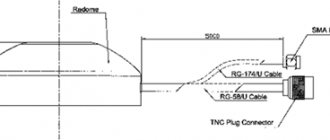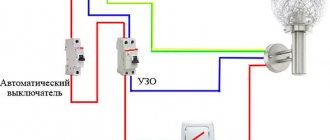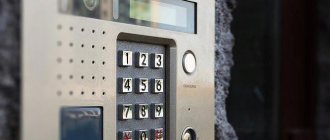A standard electric pole SV 9.5-2.0 has the following dimensions: length 9500 (mm), width 220 (mm), thickness 165 (mm).
Dimensions of electric poles:
— length (L): from 9500 (mm) to 13500 (mm); — height (H): 650 (mm), 700 (mm); — width (B): 220 (mm).
Catenary support racks:
— length (L): 13600 (mm); — height (H): from 200 (mm) to 600 (mm); — width (B): 290 (mm).
Contact line support racks for transport:
— length (L): 10500 (mm), 13500 (mm); — height (H): 412 (mm); — width (B): 220 (mm).
How much does a power line pole cost?
Price list for power line supports
| Name | Price, per piece * |
| Stand ( support ) for power lines SV 110-5 | 8625 rub. |
| Stand ( support ) for power lines SV 95-20 | 5000 rub. |
| Stand ( support ) for power lines SV 95-2s | 5700 rub. |
| Stand ( support ) for power lines SV 105-3.5 | 7800 rub. |
Requirements for power lines up to 0.4 kV in populated areas
Voltage 0.4 kV is the maximum for input into a private house. For such lines within cities and SNT, requirements have been developed for the distance from supports to utility facilities.
Diagram indicating the distances from supports to residential buildings
The distance between the line posts is no more than 50 meters. It depends on the wind and snow load in the installation region. All calculations are made by specialists. The distances they recommend should not be exceeded.
The maximum distance from the main support to the wall of the house is 25 meters. Otherwise, you will need to install additional supports.
The distance from the main to the additional distribution pole is not clearly standardized. Its location must be determined by analyzing the site plan, points of entry of electrical lines into the house and installation locations of the main supports.
The sag of the tensioned wire in the roadway area should be no more than 6 meters above the ground, and in the pedestrian path area - 3.5 m.
The distance from the additional distribution support to the wall of the house should be no more than 10 m and no less than 2 m. From the fence to the support should be at least 1 m, which is enough to provide space for electricians if it is necessary to carry out work on the pole.
The support is not prohibited from being located on the inside of the site. However, it is necessary to ensure unimpeded access to it for energy services.
The minimum standard height for cable entry from the power line into the house is 2.75 m.
Who should change electric poles?
If these are private poles
, then replacement, if necessary,
must
be carried out by the gardener-owner himself.
However, in most societies poles
, like all electrical equipment, are part of public property, explains Pyotr Kozlov, chairman of the Volgograd Regional Union of Gardeners and Gardeners.
Interesting materials:
Which of the following languages belongs to the Slavic language group of the Indo-European language family? What are the pronouns in English? Which peoples speak the languages of the Altai family? What are the main programming languages? What are the main types of variables used in the Visual Basic programming language? What are the most ancient languages? What data types exist in VBA? What place does the Russian language occupy in the world in terms of the number of speakers? What kind of coating should there be on the tongue? Which European language is easier to learn?
Requirements for a summer cottage
The PUE does not divide buildings into urban and suburban and imposes the same requirements on all objects, since the location of the property does not in any way affect fire safety.
The only difference is the procedure for processing documents for electrification of a site.
Trained teams must install power line poles in SNT
The electric grid facilities of SNT, ONT or DNT are public property. There are no representative offices of energy companies on their territory. Therefore, a standard connection agreement is concluded between the partnerships and the network company.
In other words, the issue of electrification will have to be resolved not directly, but through the chairman of the partnership. All members of the partnership, as well as persons living with them, have the right to join the networks.
The agreement between SNT and the network company stipulates the maximum power allocated to gardening. This means that if, when connecting a new garden house to electrical networks, this limit is not exceeded, the partnership will not have to coordinate the connection and renew the contract.
A member of the partnership must write a statement addressed to the chairman. Acceptance of this document and the right to connect to electrical networks cannot be denied.
After connection, electricity is paid to the responsible person from SNT, who pays the network company according to the installed meter.
Criteria for choosing a wooden support
- The material used is northern winter-cut pine.
- At the top of the column the thickness is at least 16 cm.
- An aqueous solution of SSA is used as impregnation.
- The entire support or the lower part is impregnated at the factory under a pressure of 12-14 atm.
- Technological holes are made before impregnation.
- The depth of impregnation is 85% of the outer layer of wood - sapwood (up to 40 mm).
- The impregnation process is complete if the color of the support is gray-green. If it is brown or brown, this means that the reaction is not complete. The border should be visible on the cut of the log.
- The supports are sold in classes C1 and C3 with a complete set of sizes.
Features and advantages of reinforced concrete power transmission line structures
Reinforced concrete pillars are considered the most common and reliable option. They are characterized by:
- high strength parameters;
- durability (50 or more years of reliable operation);
- corrosion resistance;
- fire safety;
- resistance to aggressive environments, moisture, low temperatures.
Manufacturers produce poles of various sections and sizes, which vary depending on the purpose of the supporting product and the loads placed on it (ice and wind). According to the design solution, products are divided into single-post or portal versions, free-standing or guyed. Single-post products are aimed at installing street lighting. Concrete electric poles having an anchor-corner design with guy wires are used for high-voltage networks.
If we look at the product labeling, the letter designations suggest that:
- products with the abbreviation SV are vibration racks made from prestressed or non-stressed building material;
- SK – conical, annular section;
- SC are cylindrical, which are produced from heavy types of concrete by centrifugation.
The value of the first digit reflects the length of the product, indicated in decimeters. The second numerical designation of the marking indicates the load-bearing capacity of the beam (during bending testing).
The strength characteristics of concrete poles for electrical networks are ensured by the use in their production of concrete mixtures of classes B30, B 40 and B45, granite crushed stone as a filler and high-strength steel reinforcement.
Installation of wiring in the house
After preparing and installing the pole on the site, it is necessary to address the issue of connecting electricity to a private house. This can be done both from the supply support, if it is located on the site, and through an intermediate pole. The following methods are used to connect them:
- bare aluminum wire;
- copper or aluminum cable;
- SIP (self-supporting insulated wire).
Cables can be laid from an intermediate or supply pole to the house not only by air, but also underground. This method is used much less frequently than steel cables stretched through the air.
The condition of power lines is significantly influenced by the type of supports used. For 100 years, the wooden support remained one of the main structures of overhead lines (OL).
Only in the 60s of the last century they began to make it with protective impregnation. At that time, instructions were given on the use of antiseptics, but they were poorly implemented, which led to rotting of the supports. The widespread transition to reinforced concrete pillars did not solve all the problems, since they showed disadvantages that are not inherent in wood products:
- fragility upon impact;
- low bending strength;
- significant weight;
- presence of leakage currents.
Advantages
Wooden support will never be written off due to the following advantages:
- Low cost.
- Light weight.
- When a wooden pole falls, the weight of which is 3 times less than a reinforced concrete one, it hangs on the wires without the “domino” effect characteristic of heavy poles.
- Indispensable in areas with increased seismic activity.
- Better withstand wind loads.
- High dielectric characteristics.
- Long service life if properly manufactured (up to 40 years).
- Do not require special maintenance.
Features of impregnation of supports
The pillars are installed in the ground without stepsons. The ends are soaked more than the side surface. During operation, up to 90% of the protective composition is washed out of them. To prevent this, the top end is covered with a galvanized roof measuring 250x250 mm, and the bottom is covered with a flat material that does not allow moisture to pass through.
According to GOST 20022.0-93, the wood for supports is impregnated with the protective agent XM-11 in terms of dry salt in an amount of 13-15 kg/m 3 . When purchasing logs for poles, you should find out under what conditions they were made, since in some specifications this quantity is underestimated by 2 times. Not all manufacturers correctly follow the manufacturing technology of their products. This requires the organization of quality control, although a specialist can determine it visually.
Maintenance and repair of wooden poles
Wooden power line supports are subject to periodic inspections and repairs. In the summer, at a depth of 30-50 cm, the depth of wood decay is checked. If the diameter of the log is 25 cm and there is more than 3 cm of rot, it is considered unsuitable and must be replaced.
Major repairs of lines, where mostly wooden supports are installed, are done at least every 6 years. The remaining repair work is carried out within a time frame depending on available resources.
The fire hazard of wooden supports requires labor-intensive operations to reduce it. If there are wooden attachments around, a ditch 0.4 m deep is dug and grass and bushes are removed.
Parts from the supports are replaced with new ones while the line is running. Here it is necessary to take into account that on parts of the structure the loads may exceed the design ones.
If the poles have deviated from the vertical by an unacceptable amount, additional loads may cause the wires to change position and get caught or touch parts. Displacements occur due to weakening of the foundation or sealing of the base of the support, displacement of the soil, weakening of connections.
Alignment is carried out using steel cables attached to a stand. The base is dug to a depth of 1.5 m and the support is straightened using a traction mechanism. Then the pit is filled and compacted.
When the stand warps due to a loose connection with the bandage, it is straightened without displacing the stepsons.
A bandage is installed on the rotted rack. Before this, the rot is removed and the pillar is covered with antiseptic paste.
Damaged parts are reinforced with temporary overlays made of wood or metal, using half-clamps, bolts and banding wire.
Before being transported to the track, parts are checked for compliance with design parameters.
To increase the service life of the racks, they should be additionally impregnated during operation by diffusion. Antiseptic bandages are installed on the underground and above-ground parts of the support and on the joints. Antiseptic paste is applied into cracks and on the tops of racks with attachments.
Due to the fact that the mass of the wooden support is small, heavy equipment is rarely required for repairs.
The support that cannot be repaired is freed from all loads and replaced with a new one using special equipment.
Materials
Wooden power line supports are made from coniferous trees, where the resin is a natural preservative and antiseptic. Northern pine, which has high strength and elasticity, is in greatest demand. The problems that reinforced concrete pillars have due to their fragility are never created by wooden supports (photo below - loading of finished products).
For impregnation, shale or creosote oil is used, as well as mixtures containing copper, chromium, and arsenic. Additionally, the supports are treated with antiseptic agents (fire retardants). This allows the pillars to be buried directly into the ground, without concrete steps, which increases their service life.
Products made from pine have the highest absorbency. If spruce and larch are used for supports, it is much more difficult to saturate them.
Impregnation allows you to bury the pillars directly into the ground. Only here it is necessary to additionally protect the ends with protective paste or covers. It is important to dry the wooden support for up to 3 months before impregnation. Fastening to reinforced concrete supports leads to splitting of the wood under the wire rod bands.
Important! To make pillars, use the lower part of the tree (butt), where there are fewer branches and a more uniform structure.
What standards exist for installing a concrete pillar on your site?
First, you should take into account that the depth of burying the support in the ground should be below the freezing level, that is, about 1.5–2 meters. You won't be able to install a concrete pillar yourself. Because:
- The height reaches at least 5 meters; it is impossible to install it in a strictly vertical position without the help of a machine.
- The need for insulators and a special reliable metal mount on a pole, which must reliably withstand all gusts of wind and ice in winter.
- The need to de-energize the line, which finally shatters all the hopes of desperate self-taught electricians.
Grounding of concrete supports
Thanks to the design of the support posts, grounding the supports is very convenient. In the racks of SV supports, in the factory during their manufacture, metal reinforcement 10 mm in diameter is installed at the top and bottom of the rack. This reinforcement runs inextricably along the entire length of the rack. It is this reinforcement that serves to ground reinforced concrete supports.
Especially for the site “Electrics. Plumbing"
Tables of all types of concrete supports
©Elesant.ru
Other articles in the section: Overhead power lines
- Types of power transmission line supports by material
- Types of supports by purpose
- Overhead power lines with SIP wires
- Wooden supports for overhead power lines
- Reinforced concrete power transmission line supports
- Reinforced concrete power transmission line supports
- Power line support structures
- Tension of overhead power line wires
- SIP installation mistakes that should not be made
- Preparatory work for installation of overhead power lines
Flaws
Along with the advantages, wooden supports have disadvantages.
- Impregnating compositions may contain harmful substances that are in the air of the work area (fuel oil, kerosene, creosote, etc.). Oil-based antiseptics are especially harmful. In addition, they have an increased fire hazard.
- Logs must be manufactured with the required diameters and taper.
- High-quality products are obtained by winter cutting and drying under a canopy for 6 months. Here it is necessary to treat the logs with an antiseptic so that they do not rot.
